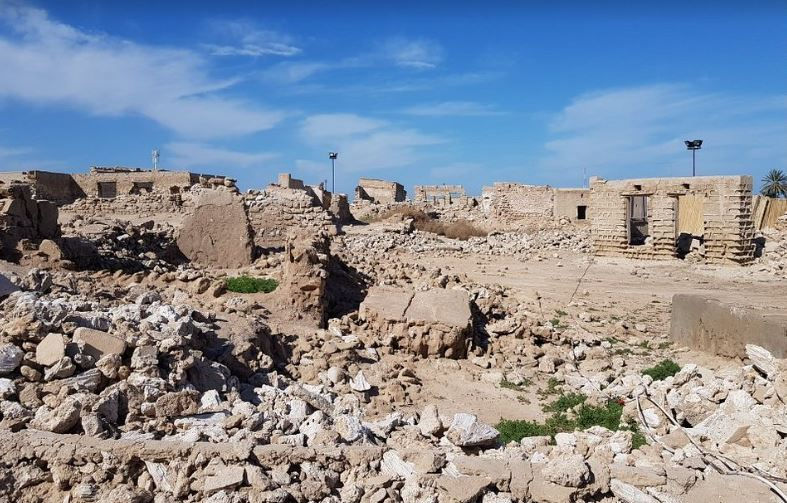The Ghost Town of Ras Al Khaimah UAE
- Muhammad Rehman

- Sep 22
- 3 min read
The ghost town of Ras Al Khaimah in the United Arab Emirates is one of the most intriguing destinations for those interested in history, mystery, and culture. Nestled within the rugged landscapes of the emirate, this abandoned settlement holds a unique charm that continues to fascinate visitors. Unlike the bustling modern cities of the UAE, the ghost town offers a glimpse into a past that has long been left behind, where deserted homes and ancient walls tell stories of a once-thriving community.
Walking through the town, visitors are struck by the silence that dominates the atmosphere. The wind whistles through crumbling walls, and the echoes of footsteps seem louder than usual, giving the place an eerie, almost timeless feel. The houses, constructed from stone and mud, stand as weathered reminders of traditional Emirati architecture. Though many structures are partially collapsed, they still showcase the craftsmanship of the past. Wooden doors, narrow windows, and simple layouts reflect how people once lived in close-knit communities, relying on each other for survival in the harsh desert climate.
One of the most captivating aspects of the ghost town is the speculation surrounding its abandonment. While historical changes, modernization, and the lure of better opportunities in urban centers likely caused residents to leave, locals often share legends and tales that add a mysterious aura to the site. Stories of jinn, or spirits, are sometimes linked to the area, deepening the intrigue and enhancing the ghostly atmosphere that surrounds it. These myths, passed down through generations, give the town a layer of folklore that makes it more than just an abandoned settlement—it becomes a place where history and imagination intertwine.
The ghost town is also significant as a cultural landmark. It serves as a reminder of the resilience and resourcefulness of earlier generations in Ras Al Khaimah. Inhabitants of this settlement survived with limited resources, relying on farming, fishing, and trade. The ruins provide insight into how people built homes suited to the desert environment, using natural materials to keep interiors cool and withstand the test of time. For visitors, exploring the town is not just about seeing abandoned structures but also about understanding the roots of Emirati heritage.

Despite its deserted state, the ghost town has become a point of interest for explorers, photographers, and tourists seeking a different side of the UAE. Unlike the glitzy skyscrapers and modern shopping malls the country is known for, this site provides a raw and authentic experience. Photographers find inspiration in the textures of the old walls, the contrast of light and shadow, and the backdrop of mountains that add dramatic scenery to the ruins. Adventurers, on the other hand, enjoy wandering through the maze-like alleys, uncovering hidden corners and imagining what life must have been like centuries ago.
In recent years, the ghost town has also drawn attention from heritage conservationists who see its potential as a cultural attraction. Preserving such sites is important, as they hold stories that modern cities cannot tell. They connect people with the past and showcase the journey of the UAE from humble beginnings to global prominence. Visiting the ghost town is like stepping back in time, offering a rare opportunity to reflect on history while standing in the midst of ruins that continue to guard their secrets.
In essence, the ghost town of Ras Al Khaimah is more than an abandoned village—it is a symbol of endurance, mystery, and tradition. Its silence speaks volumes, reminding visitors of the lives once lived there and the legends that continue to surround it. Whether approached as a historical site, a cultural treasure, or a place shrouded in myth, the ghost town remains one of the most fascinating hidden gems of the UAE.



Comments